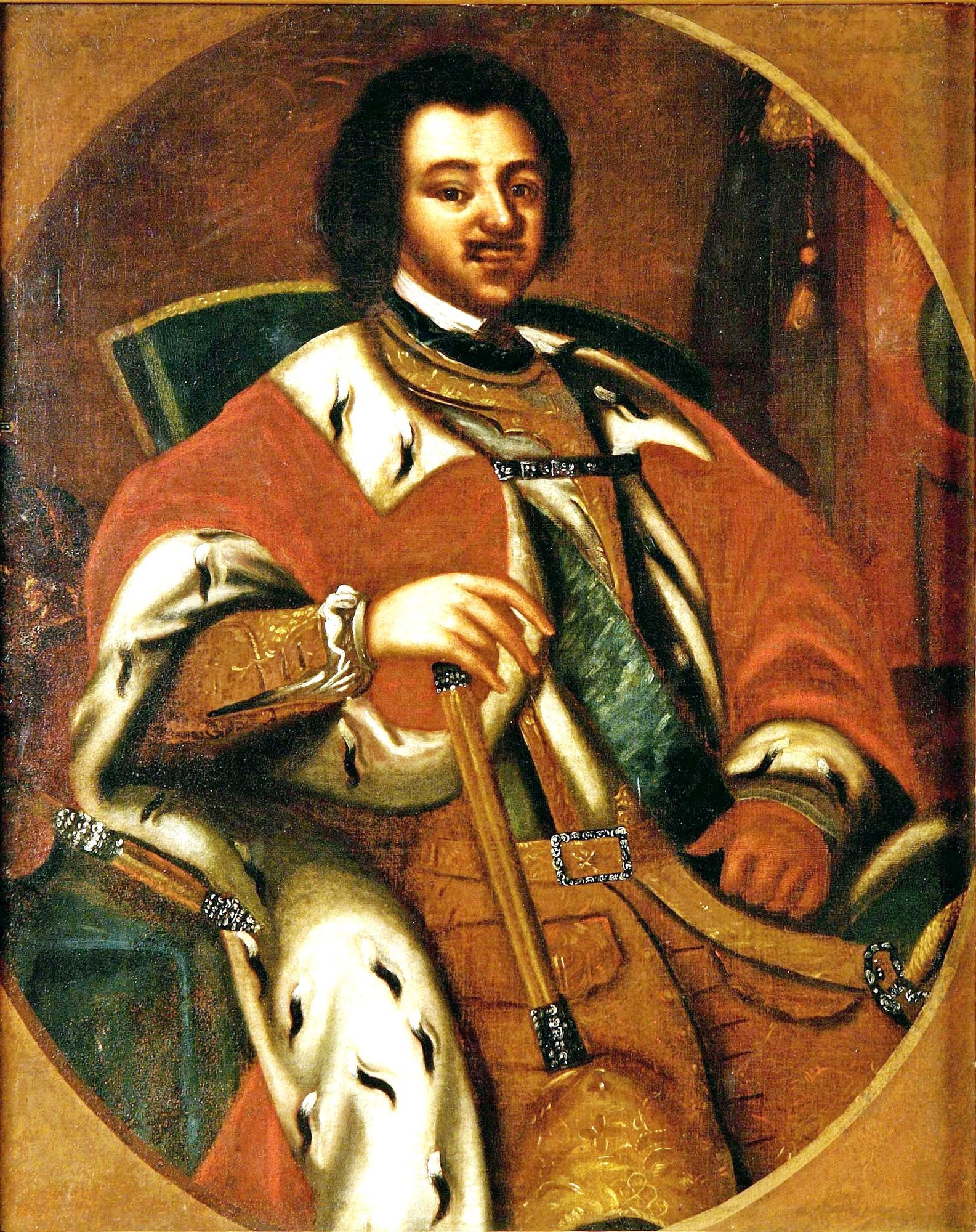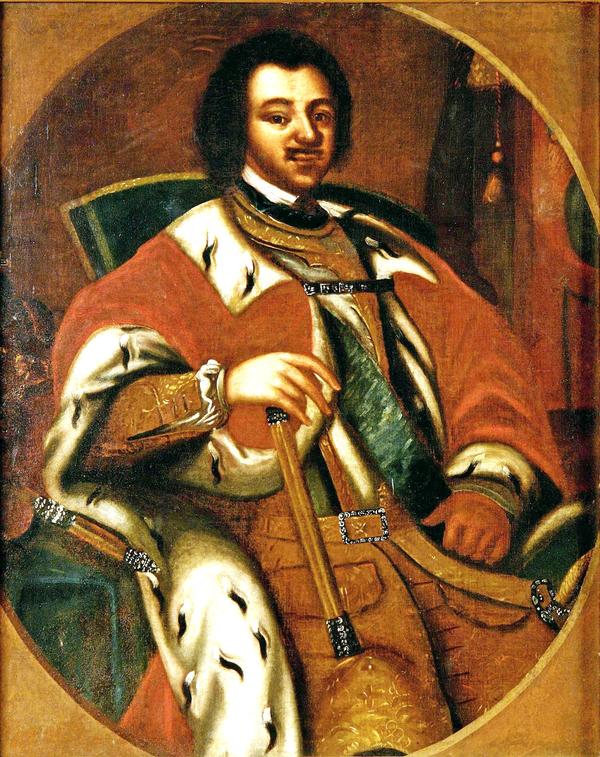This portrait of Peter I was created by an unknown artist in the first quarter of the 18th century. The large size of the canvas added splendor appropriate for an image of the tsar to the intimate portrait. The ruler sits on a throne holding a field-marshal’s baton, a symbol that distinguishes great military leaders. During parades, commanders usually saluted soldiers with a raised baton. The composition of the painting fits a circle. The curved lines are also reproduced in the shape of the back of the throne, the folds of the cloak and the figure of the monarch.
Portrait of Peter I on the Throne
Creation period
1st quarter of the 18th century
Dimensions
119,3x97,8 cm
Technique
Oil on canvas
Collection
Exhibition
2
Open in app#1
Unknow author
Portrait of Peter I on the Throne
#2
#5
Peter I would not sit for every artist. In most cases, artists copied the best portraits painted from life. Original images were reproduced as engravings that artists used as the basis for their paintings. The first reference portrait of the kind was that painted by Godfrey Kneller in 1697. Engraver John Smith reproduced it as a half-length engraving, which was then used to produce about 70 variations of the image. The version by Louis Caravaque dated 1716 is deemed to be another important type, with Peter standing against the background of a shore and some ships.
This work by an unknown artist combines traits of early portraits of the monarch by Johann Gottfried Tannauer. In those paintings, Peter I appeared as a heroic military commander against a backdrop of battles: “Peter in the Battle of Poltava” of the 1710s, “Portrait of Peter the Great” of 1716, and the portrait of Peter I for the Chernogolovys’ house in Riga of 1711. The ruler was depicted wearing a tsar cloak and armor on top of a brown leather caftan, and holding a field-marshal’s baton. However, experts never found a portrait of Peter I that would be absolutely similar in terms of composition.
#6
Tannauer worked in Russia from 1711 till 1737. He arrived at court just before the Pruth River Campaign, so the monarch took the painter along to war. There are stories that Tannauer lost all of his property during the campaign, but he always remained with the monarch. Upon return the tsar appointed him the Hofmaler, i.e. the court painter. There were three of them at court: Johann Gottfried Tannauer from 1711, Louis Caravaque from 1716, and the tsar’s favourite Ivan Nikitin from 1720.
There are numerous images of the great emperor: from the first portrait in the Tsar’s Book of Titles (Tsarsky Titularnik), a history reference book of the time, to three different portraits on the bed of death. The last portraits from life were made by the same three court painters: Nikitin, Caravaque and Tannauer.There are numerous images of the great emperor: from the first portrait in the Tsar’s Book of Titles (Tsarsky Titularnik), a history reference book of the time, to three different portraits on the bed of death. The last portraits from life were made by the same three court painters: Nikitin, Caravaque and Tannauer.
#7
Yaroslavl Museum of Fine Arts
read morehide
00:00
00:00
1x
Portrait of Peter I on the Throne
Creation period
1st quarter of the 18th century
Dimensions
119,3x97,8 cm
Technique
Oil on canvas
Collection
Exhibition
2
Open in app
Share



